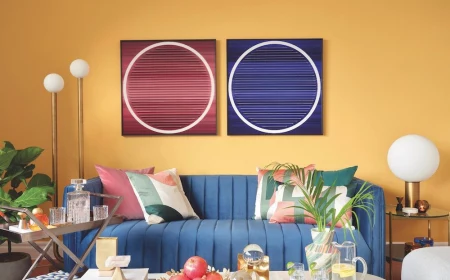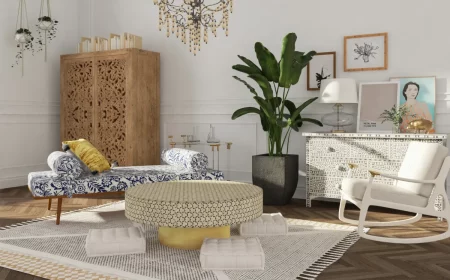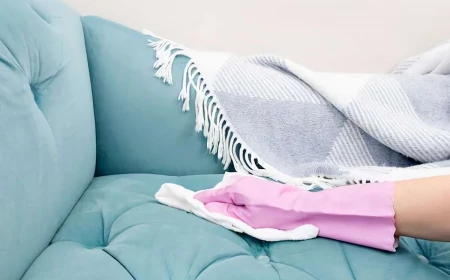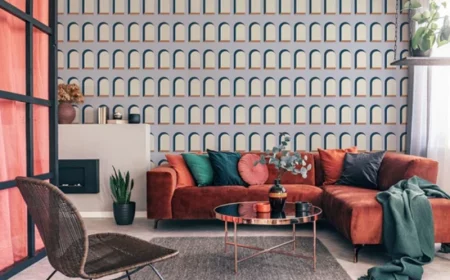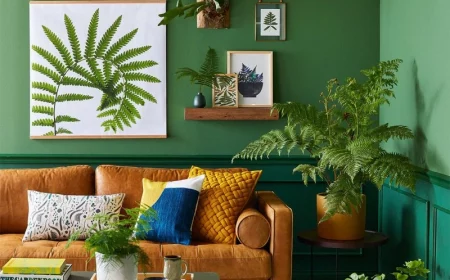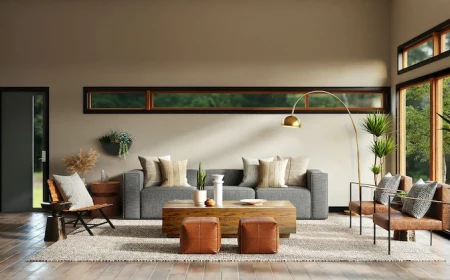More Than a Coffee Table: Finding the Right Centerpiece for How You Actually Live
After two decades in design and custom furniture, I’ve walked through more living rooms than I can count. And I can tell you, the most common mistake people make has nothing to do with wall color or sofa size. It’s the coffee table.
In this article
Honestly, it’s usually an afterthought. People just drop a generic rectangle in the middle of the room because… well, that’s what you’re supposed to do, right? But that central surface is the functional hub of your home. It’s where you prop your feet up after a long day, where the kids build their masterpieces (and messes), and where you share a drink with a friend. It needs to work for how you really live.
I’ve had clients who were convinced they didn’t want one at all. One couple in a tiny city apartment thought it would just be clutter. For them, we found a slick set of three nesting tables they could pull out for guests or tuck away completely. Another family with three young, energetic boys needed something soft and basically indestructible. We landed on a huge, round ottoman wrapped in a high-performance fabric. The point is, you have to think about the job first, and the object second. This guide is all about breaking down the practical alternatives and figuring out which one is right for you.
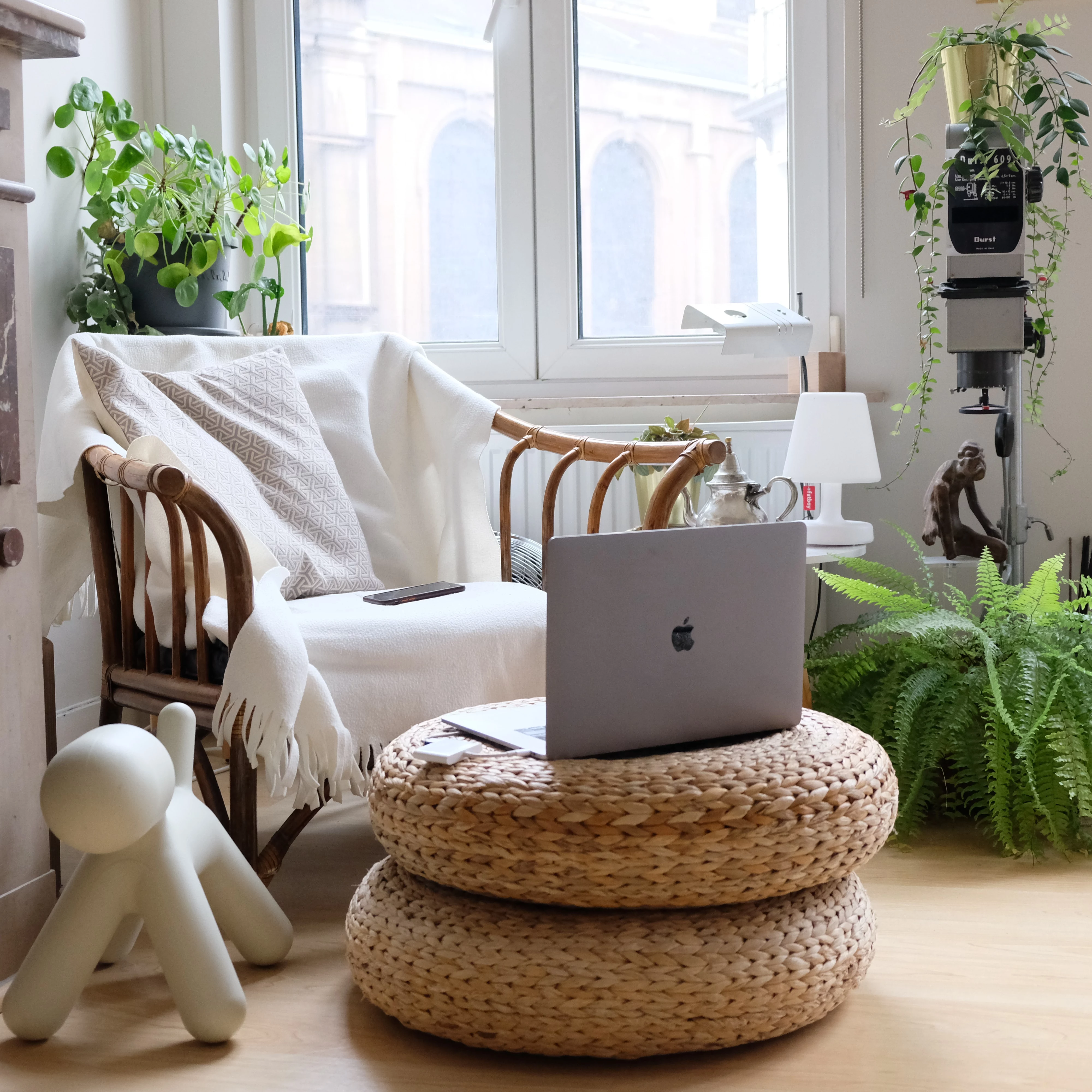
Getting the Basics Right: Space and Flow
Before you even think about materials or style, you have to understand the space your centerpiece will live in. This isn’t about stuffy design rules; it’s about ergonomics—the stuff that makes a room feel comfortable and easy to move through. Getting this part right is the foundation of a great living room.
The Golden Rule of Heights and Reach
The relationship between your sofa and your table is everything. For years, the pros have used a simple and incredibly effective rule of thumb: the top of your table should be about one to two inches lower than the seat of your sofa.
Most sofa seats sit somewhere between 17 and 19 inches off the floor. That puts the sweet spot for your table height right around 15 to 18 inches. Why so specific? It’s all about a natural, easy reach. You shouldn’t have to lurch forward just to set down your glass. A table that’s too low can be a literal pain in the back, while one that’s too high feels like a formal dining table and visually chops up the room.
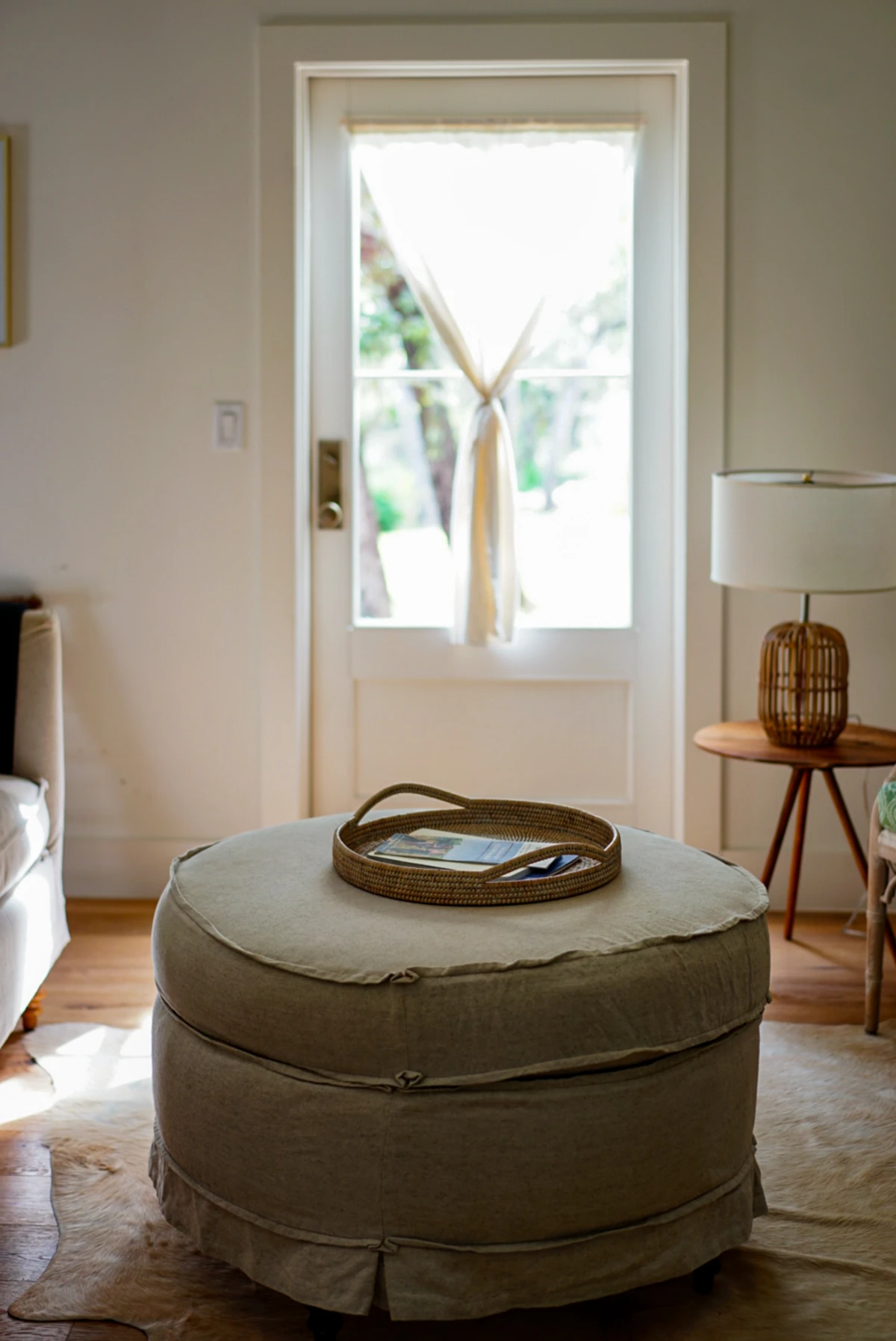
Quick tip: Pause and go measure your sofa’s seat height right now. Seriously, grab a tape measure. That number is your starting point for everything else we’re about to cover!
Give Yourself Room to Breathe: Circulation and Clearance
A living room needs clear pathways to walk through. The gap between your sofa and coffee table is a critical one. You need enough room to walk by without turning sideways, but not so much that the table is floating in no-man’s-land. The magic number here is between 14 and 18 inches. Any less, and it’s cramped. Any more, and you can’t reach the remote.
And don’t forget about the main walkways in the room, like the path from the doorway to the sofa. That needs at least 30 inches of clear space, though 36 inches is even better. I’ve seen gorgeous rooms completely ruined by a massive table that turns the simple act of crossing the room into an annoying obstacle course. It’s not just a design foul; it’s a daily frustration.
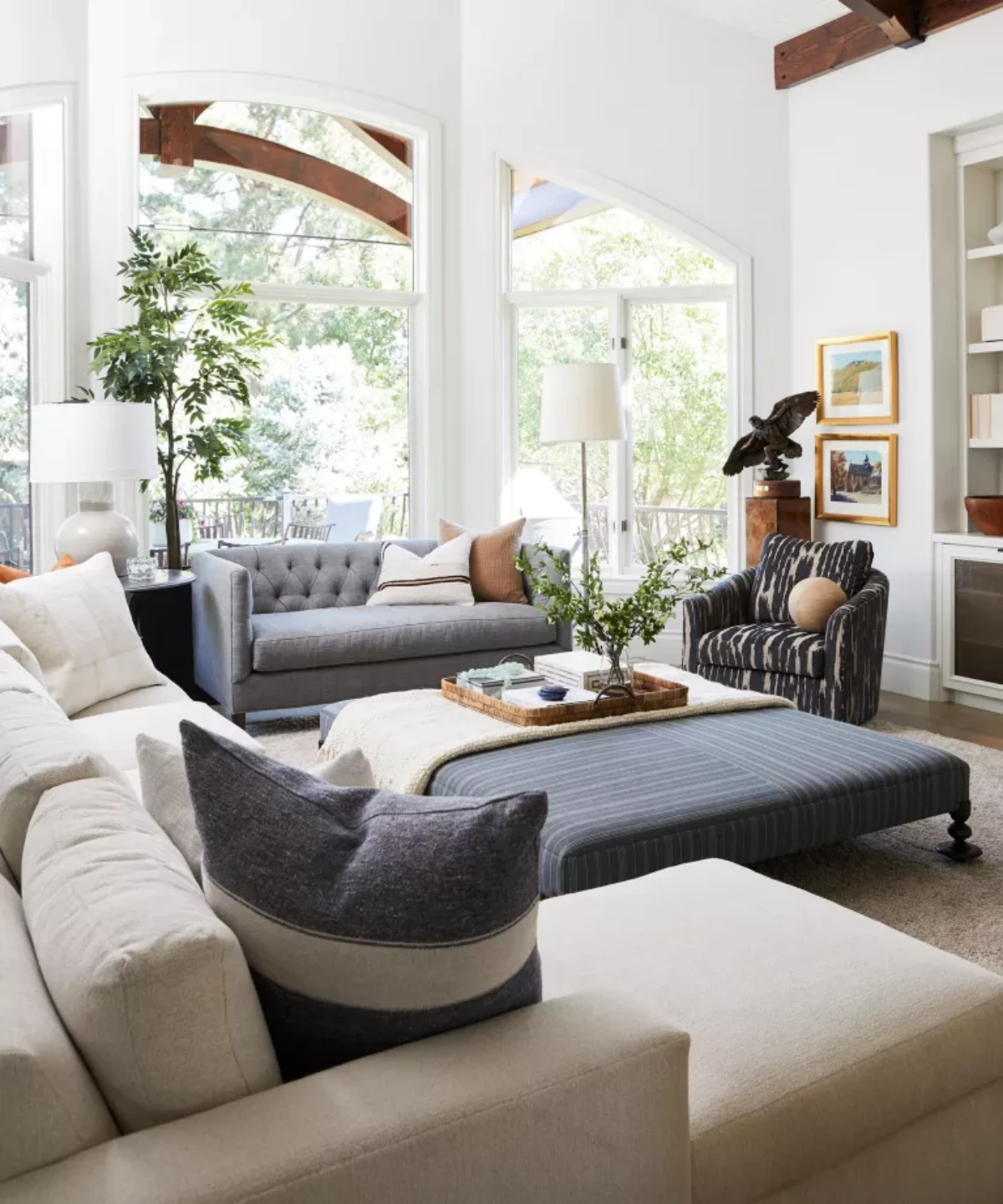
Let’s Break Down the Options: Which One’s for You?
Okay, once you have your measurements, you can start exploring the fun stuff. But before you fall in love with a look, it helps to know what you’re getting into. Here’s the real-world breakdown of the most popular coffee table alternatives.
A quick rundown can help you decide:
- The Upholstered Ottoman: This is your go-to for comfort and kid-friendly spaces. It’s soft, adds texture, and can double as extra seating. The big downside? You absolutely need a tray for drinks. It offers no storage unless you find a specific storage model, and maintenance means regular vacuuming. Cost-wise, you’re in the mid-to-high range.
- A Cluster of Stools or Poufs: Perfect for flexibility and small rooms, as you can move them around as needed. They can be a fantastic budget option, too. The main issues are stability and the potential to look cluttered. They can also be a tripping hazard for toddlers or anyone a bit unsteady on their feet. And forget about storage.
- The Reclaimed Trunk: If you want character and hidden storage, this is your winner. Trunks are full of history and are amazing for stashing away blankets or board games. However, they often have sharp corners (a major no-no for kids) and can require a good bit of work to clean up and seal. Cost is usually low-to-mid, but requires some sweat equity.
- The Live-Edge Slab or Stump: This is the ultimate statement piece. It’s natural, solid, and brings a huge ‘wow’ factor. But heads up: these pieces are incredibly heavy and are usually the most expensive option. They’re also a serious commitment to move and offer zero storage.
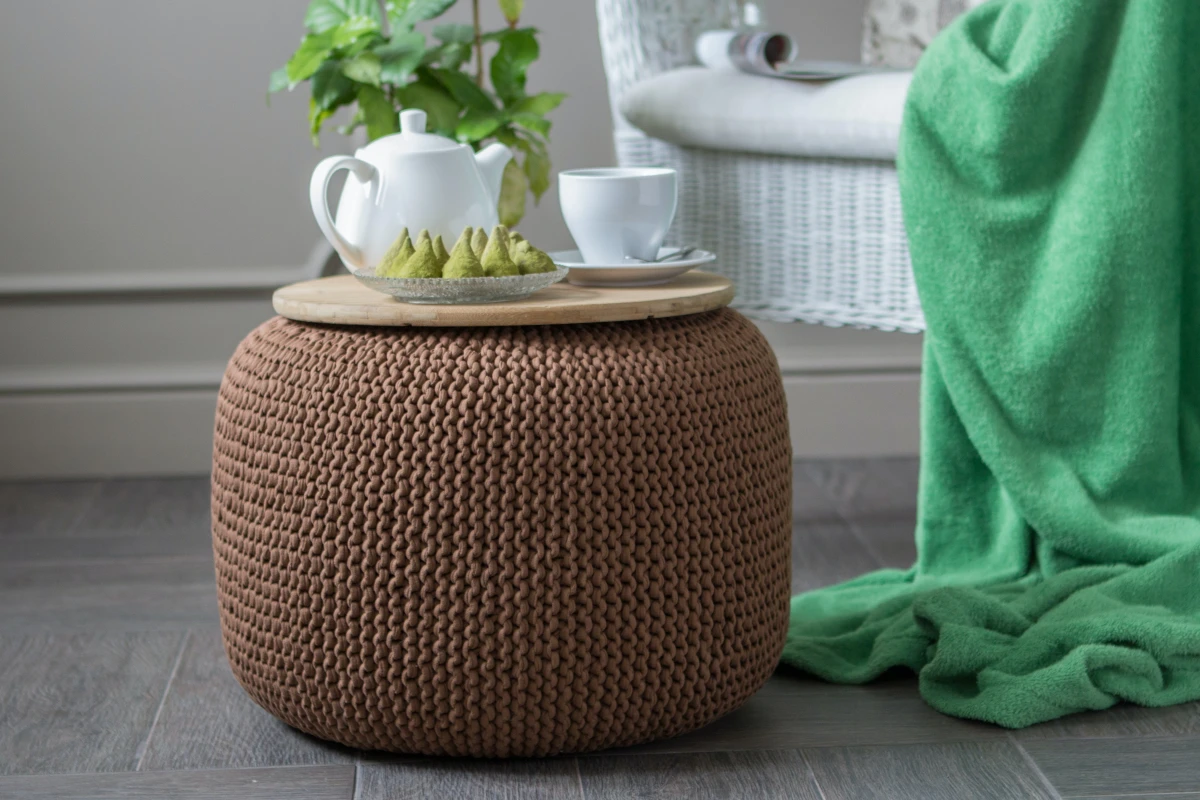
A Pro’s Guide to Choosing Your Centerpiece
The Upholstered Ottoman: Comfort and Caution
An ottoman is a fantastic choice, but you have to buy smart. The frame is everything. Seriously, only consider ottomans built with a kiln-dried hardwood frame. The cheaper ones use particleboard that can warp or even break if someone sits on it. Expect to pay between $400 and $1,500 for a quality piece, depending on the size and fabric.
Speaking of fabric, this is where you need to be realistic. For a family home, I always recommend a high-performance fabric that’s stain-resistant and easy to clean. Look for fabrics with a high “double rub” count—over 30,000 is good for daily use. And remember, that beautiful velvet ottoman might look great in a photo, but it will show every single spill.
By the way, the tray isn’t a suggestion; it’s a requirement. I learned this the hard way when a guest at a client’s house spilled an entire glass of red wine on a brand-new cream ottoman. A disaster. Now, I insist on pairing them with a large, heavy tray made of wood, metal, or resin to create that stable, flat surface you need.
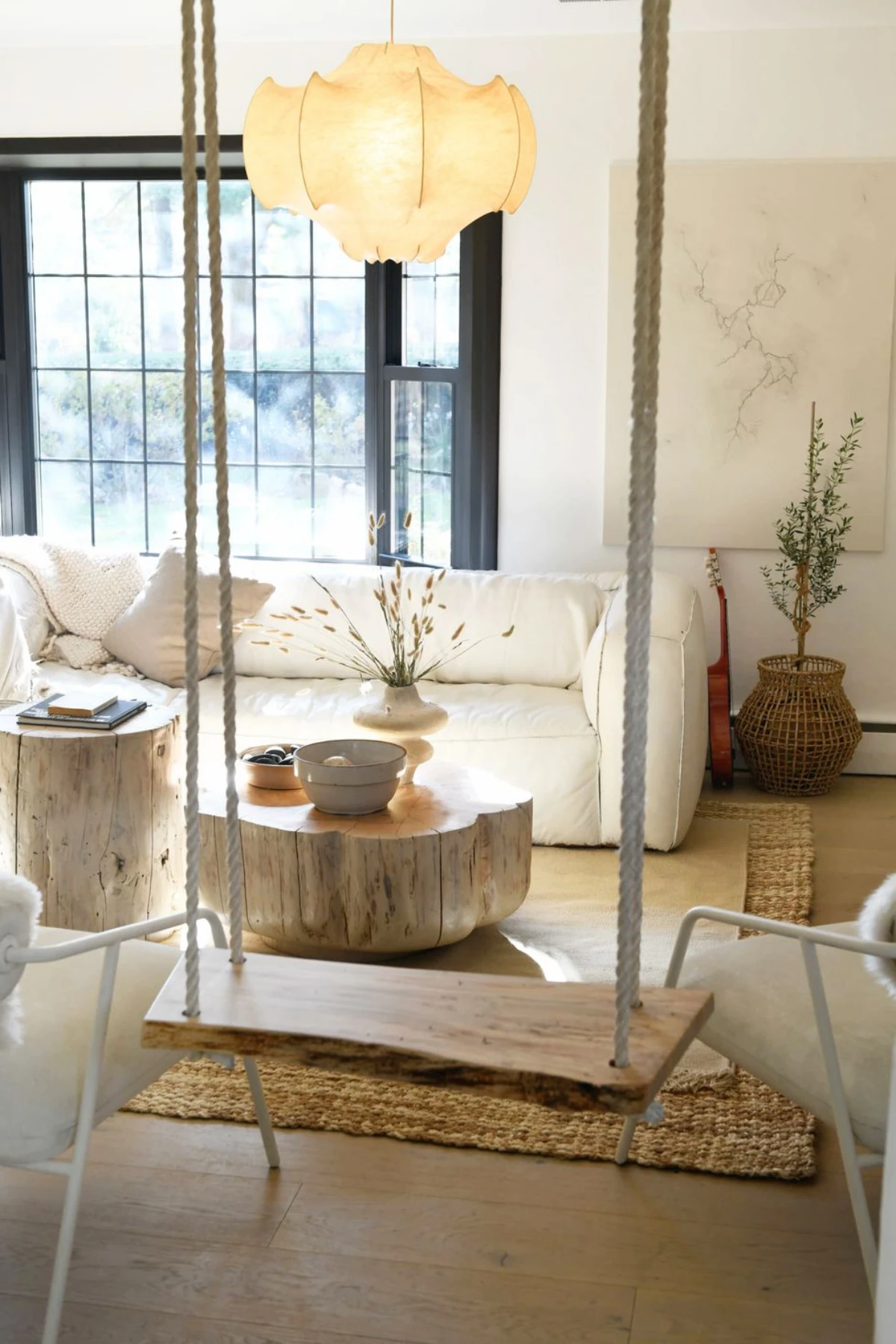
A Cluster of Poufs or Stools: Flexible but Fickle
Using a group of smaller items is chic and flexible, but it can quickly go from looking cool to looking like a yard sale. The trick is to find a unifying element—either a shared material (like different wooden stools) or a common color palette (like several poufs in shades of blue). Using an odd number, like three, usually looks more natural to the eye.
It’s good to know the difference here: poufs are generally soft and low, while stools are hard and often taller. For a functional surface, you’ll want structured poufs or hard-topped stools. A saggy, beanbag-style pouf just won’t cut it for holding a cup of coffee. This can be a great budget-friendly route, though. You can find unique stools at a flea market for under $50 each.
Heads up! A cluster of lightweight items can be a tripping hazard, especially for toddlers or older adults. If you have a high-traffic home, this might not be the safest choice.
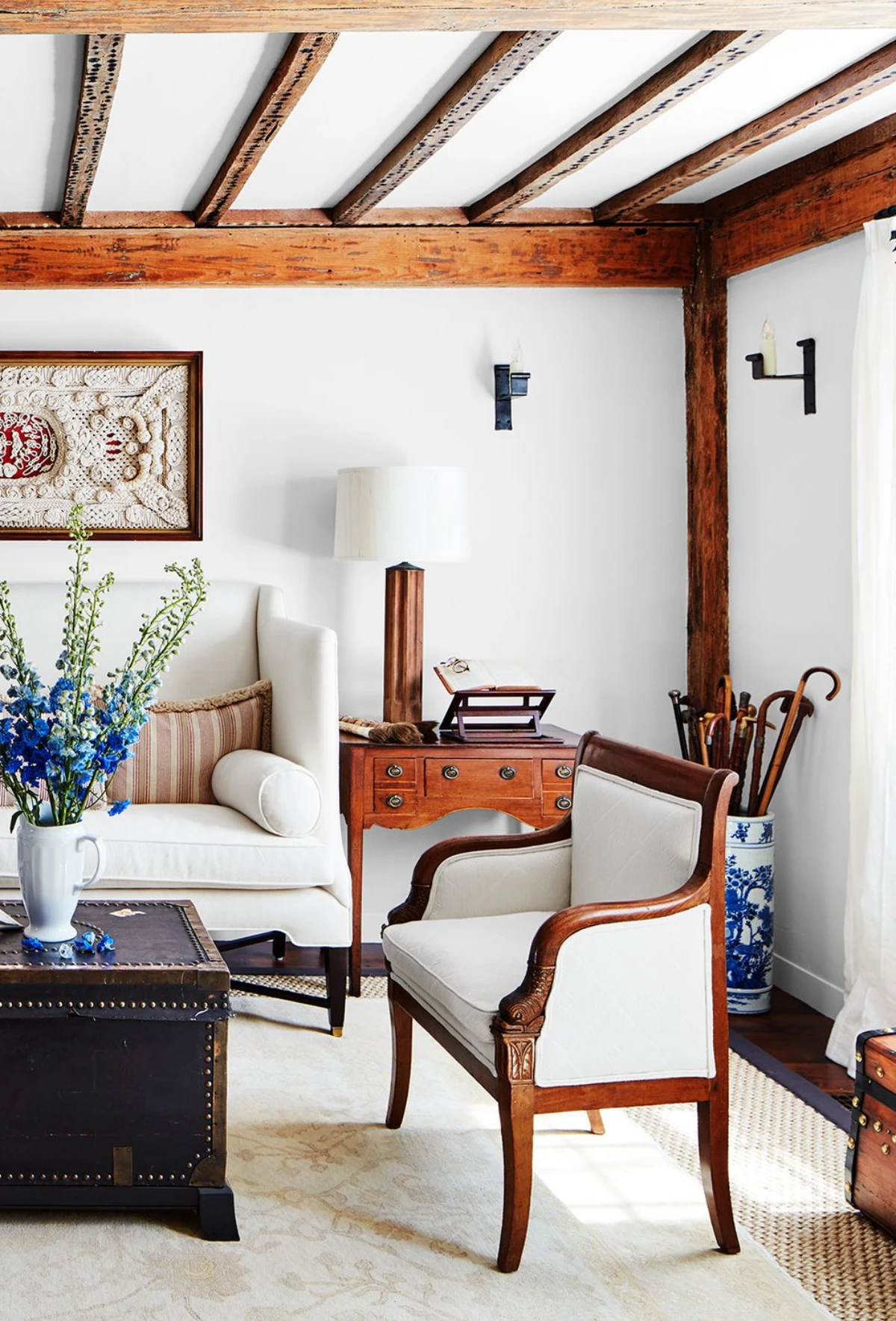
The Reclaimed Trunk: Character with Complications
I love using a vintage trunk. It adds instant history and gives you a ton of hidden storage. But they rarely work as-is. Flea markets and antique shops are your best bet, but you have to inspect them carefully. Does it smell musty? That smell is nearly impossible to get out. Look for little holes that could signal woodworm, and check that the hardware isn’t rusted shut.
Here’s my go-to 5-step trunk rescue mission to make it usable:
- Deep Clean: A good scrub with mild soap and water is the first step. Get all the grime off.
- Deodorize: Leave an open box of baking soda or a bowl of activated charcoal inside for a week or two. It works wonders on musty smells.
- Lightly Sand: Use fine-grit sandpaper to smooth any rough spots on the top, but don’t strip away the character.
- Seal the Deal: Apply a coat of matte polyurethane varnish. This protects the surface, prevents flaking, and makes it wipeable without adding a fake-looking gloss.
- Protect Your Floors: Always, always, always apply thick felt pads to the bottom.
What you’ll need for the project: Sandpaper ($5), Tack Cloth ($3), Baking Soda ($2), and a can of Matte Polyurethane Varnish ($20). It’s a cheap project with a huge payoff. And if you have kids, consider getting a piece of tempered glass cut for the top with smooth, rounded edges. It makes the surface level and much safer. A local glass fabricator can usually do this for about $100-$150.
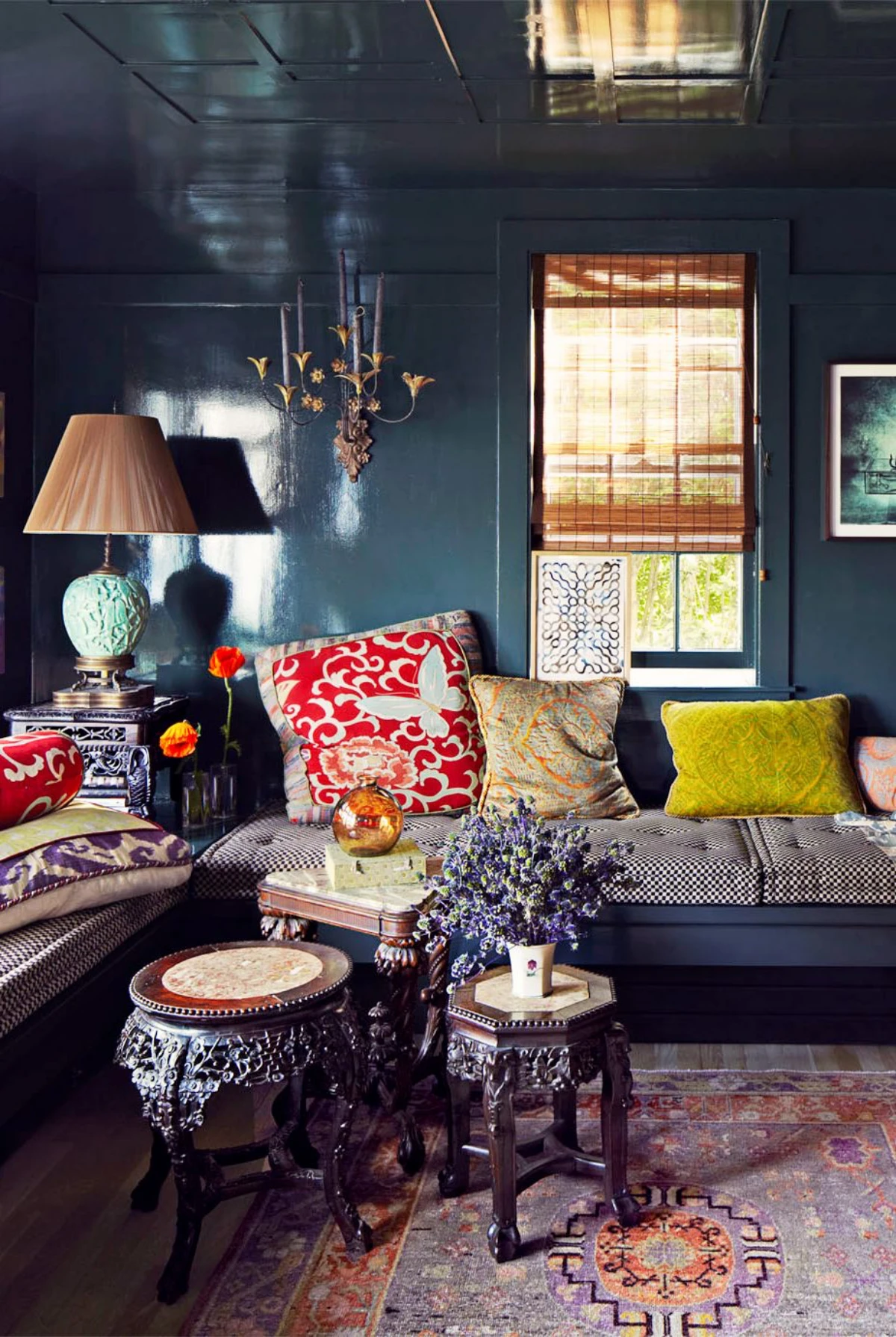
The Tree Stump or Slab: Natural and HEAVY
Bringing a piece of a tree into your living room is a beautiful way to connect with nature. But this is one area where you need to know the science. The wood MUST be properly dried. If it’s not, it will crack, warp, and split as it releases moisture inside your climate-controlled home. Always ask the seller if the wood is kiln-dried.
These pieces are also incredibly heavy. We’re talking several hundred pounds. You’ll need help moving it, and you must put thick felt pads on the bottom. I once saw a client drag a gorgeous stump across their brand-new oak floor, leaving a deep, heartbreaking gouge behind.
To find one, you don’t need a fancy supplier. Try searching Google Maps for “sawmill near me” or check out Instagram hashtags like #[yourcity]woodworker. You can often find local artisans selling incredible pieces. Expect a raw slab to start around $200, but professional finishing and a custom base can easily add another $500 or more to the final price.
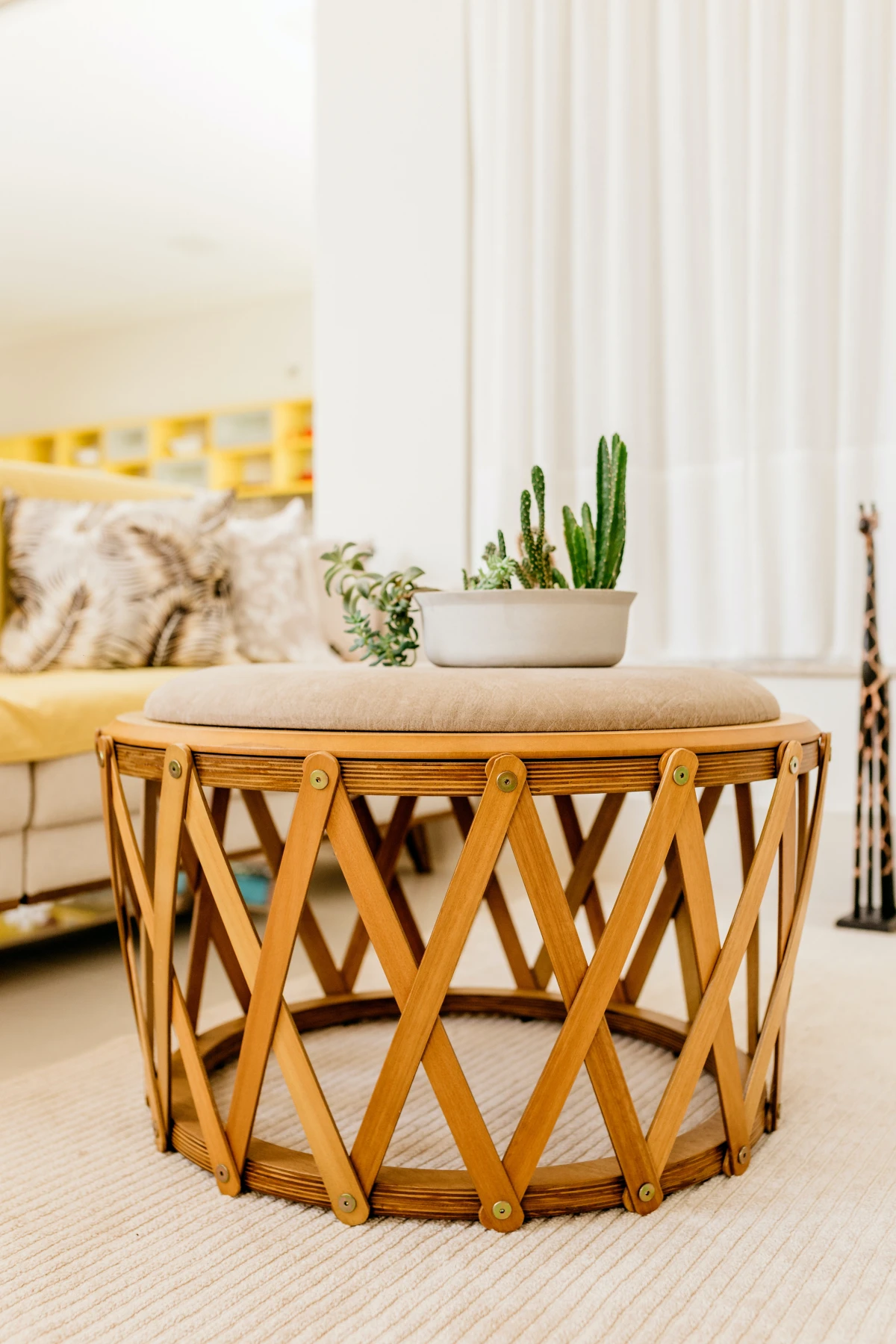
Final Thoughts: A Quick Gut-Check
Before you pull the trigger, run through this list. Answering these questions honestly can save you from a major headache later.
- How do you really live? Be honest. If your kids do homework and you eat dinner in the living room, you need something durable and easy to clean. Save the delicate, artsy piece for a more formal space.
- What’s the room’s scale? Remember those measurements? A big, airy room can handle a massive trunk. A smaller room needs something visually lighter, like a cluster of stools.
- What’s your tolerance for upkeep? A tufted ottoman needs vacuuming. An oil-finished slab needs re-oiling. Be realistic about how much maintenance you’re willing to do.
- Is it safe for your household? This is the most important one. If you have kids, avoid sharp corners. If you have older relatives, avoid tripping hazards. Safety first, always.
At the end of the day, the goal isn’t just to find a “coffee table alternative.” It’s to find the right centerpiece for your life. Sometimes, that might even be a traditional coffee table! The best choice is the one that works well, feels right, and makes you happy every time you use it. Your home should be a collection of things you love, and the piece at the very center of it all is the perfect place to start.
Inspirational Gallery with Photos
The Tray is Your Best Friend: An oversized ottoman is brilliant for comfort, but a nightmare for a wobbly wine glass. The solution is a large, sturdy tray. It creates a stable surface instantly. For a luxe feel, try a lacquered tray from a brand like West Elm. For a more rustic or Scandinavian vibe, a simple oak or walnut tray provides warmth and texture. It corrals remotes, holds drinks, and can be lifted away when it’s time for a family board game on the floor.
- Adds a soft, textural element to the room.
- Provides extra, comfortable seating in a pinch.
- Creates a kid-friendly zone with no sharp corners.
The secret? Choosing a large, upholstered ottoman instead of a traditional hard-surfaced table. It transforms the living room’s center into a versatile, cozy hub.
The ‘rule of thirds’ isn’t just for photography. When styling your coffee table, grouping items in threes creates a look that’s visually balanced and dynamic.
Try it yourself: combine a stack of art books (horizontal), a tall vase with a single monstera leaf (vertical), and a small, sculptural ceramic bowl (organic shape). This simple principle elevates your centerpiece from a mere surface to a curated focal point.
How do I pick the right shape for my sofa?
Think of it as a conversation. A long, rectangular sofa is best complemented by a round or oval table, which softens the straight lines and improves flow around the ends. If you have a sectional or L-shaped sofa, a large square or round table fills the central space beautifully, ensuring everyone has a spot within reach. The goal is balance, not just matching shapes.
A common mistake: Choosing a coffee table that’s too small. A tiny table floating in front of a substantial sofa looks timid and out of proportion. It throws off the entire room’s scale. Don’t be afraid to go big! A generously sized centerpiece anchors the seating area and feels more intentional and luxurious. If a single large piece is too bulky, consider grouping two smaller tables together.
The trend of ‘nesting’ or ‘bunching’ tables offers ultimate flexibility. Instead of one monolithic block, you get a dynamic duo or trio. Push them together for a traditional feel, or pull them apart to serve guests in different spots. Brands like Crate & Barrel and Article offer beautiful sets combining materials like travertine stone tops with dark metal bases, adding a layer of architectural interest.
- A low, slatted wood bench
- A stack of two or three vintage leather suitcases
- A large, firm floor pouf like those from The Citizenry
- A cluster of sturdy, reclaimed wood stumps
Over 60% of consumers now consider sustainability when making a furniture purchase, according to recent market studies.
This shift is steering choices towards solid wood tables from responsibly managed forests (look for FSC certification) or pieces made from reclaimed materials. A vintage find isn’t just a budget-friendly choice; it’s a piece of history and an eco-conscious statement for the heart of your home.
Fabric Ottoman: Offers softness and warmth. Perfect for families with young children. Opt for high-performance fabrics like Crypton or Sunbrella for stain resistance. Can double as extra seating.
Leather Ottoman: Develops a beautiful patina over time. It’s durable and easy to wipe clean. It adds a sophisticated, classic touch to the living room.
For a busy family home, a high-performance fabric often wins for its sheer resilience, while leather is a timeless investment for a more adult-centric space.
Create a sensory experience through materials. The cool, smooth surface of a marble or travertine table feels sleek and luxurious. The rich grain of a solid walnut piece from a maker like Ethnicraft connects us to nature and adds organic warmth. For a touch of glamour, the subtle reflection of a brass or chrome frame can brighten the space. Think about not just how your centerpiece looks, but how it feels to the touch.

